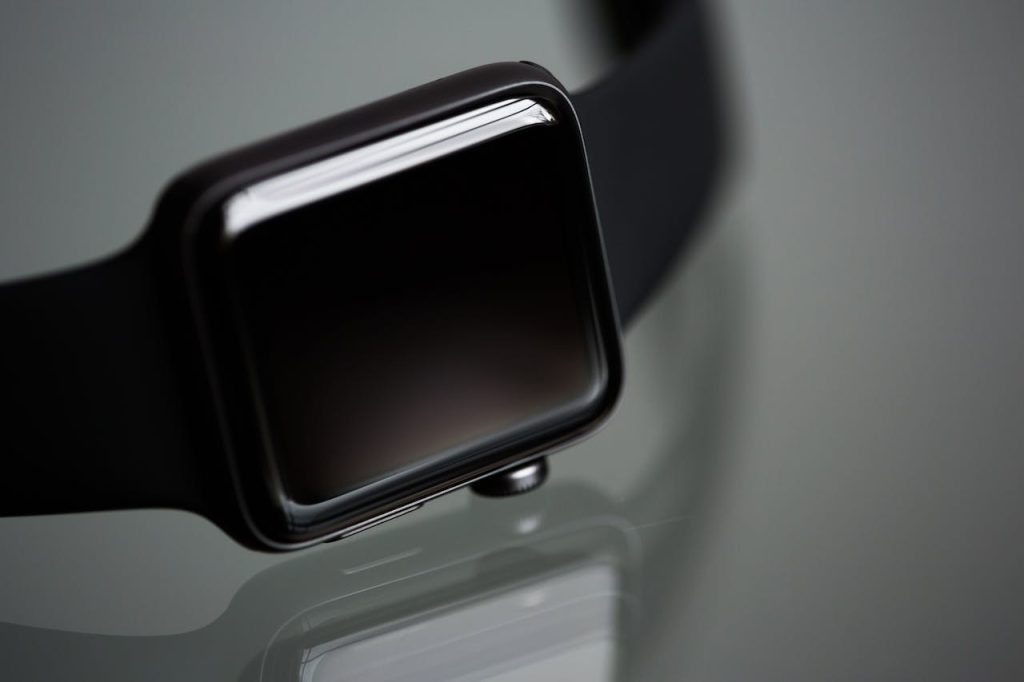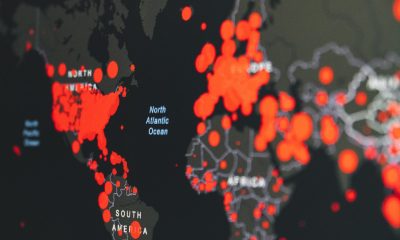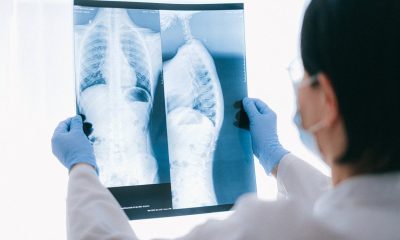Smartwatches could be game changer for detecting irregular heartbeats
Smartwatches were found to work better on children than traditional techniques.
Published
5 months ago onBy
Talker News
By James Gamble via SWNS
Smartwatches can help doctors detect irregular heartbeats in children, according to a new study.
American researchers say smartwatches that constantly measure the heartbeat of the wearer can help them diagnose abnormal heartbeats in children.
The intelligent watches were found to work better on children than traditional techniques of observing heartbeats which kids can find invasive.
A new study found Apple smartwatches were mentioned 145 times in patients' medical records over a four-year period, with 29 children having their arrhythmia diagnosed for the first time thanks to data provided by the devices.
The doctors behind the study say case studies have already proven that smart timepieces could prove an extremely useful method in monitoring the heartbeats of children and detecting abnormal rhythms.
One young boy from California was diagnosed with a heartbeat abnormality condition after wearing his mother's smartwatch during an episode and sending the resulting data to his doctor.
When diagnosing cardiac arrhythmias - or heart rhythm abnormalities - in children, doctors face two main challenges.
The first is that existing heart-monitoring devices are still far from ideal for kids.
Until recently, children would be forced to wear a Holter monitor - a device around the size of a smartphone with electrodes strapped to the child's chest - for between one and two days.
They are now able to wear far-less invasive 'event monitors', consisting of a single sticker stuck to the chest of the child, for a few weeks.
But these monitors often fall off and are difficult to keep from detaching over extended periods and can result in irritation to the child's skin.
The second challenge arises in the fact that even a few weeks of monitoring might not be sufficient to capture the erratic nature of a child's heart, as arrhythmias in children can be entirely unpredictable, making it difficult for doctors to make an accurate diagnosis.
Connor Heinz, a 15-year-old boy from California, faced both of these problems when he experienced periods of a racing heartbeat from the age of 12.
The adhesive monitors were too irritating, and he was having irregular heart rhythms only once every few months.
His doctor and a senior author of the study, Scott Ceresnak, thought he knew what was causing the racing rhythms but wanted confirmation.

So Dr. Ceresnak suggested that Connor use the smartwatch belonging to his mother, Amy Heinz, to record the rhythm the next time his heart began racing.
Using smartwatches to measure children’s heart rhythms is currently limited by the fact that existing algorithms that detect heart problems have not yet been optimized for kids, who have faster heartbeats than adults and tend to experience different types of abnormal rhythms than adults who have cardiac arrhythmias.
However, Dr. Ceresnak's study shows that smartwatches can appear to help detect arrhythmias in kids - suggesting it would be useful to design versions of the smartwatch algorithms based on real-world heart rhythm data from children.
In their study, the researchers searched patients’ electronic medical records between 2018 and 2022 for the phrase 'Apple Watch' and checked to see which patients had submitted smartwatch data and subsequently received a diagnosis of cardiac arrhythmia.
Data from the watches included alerts about heart rates and patient-initiated electrocardiograms (ECGs) from an app that uses the electrical sensors in the watch.
When patients activate the app, the ECG function records the heart’s electrical signals, and physicians can use this pattern of electrical pulses to diagnose different types of heart problems.
The study, from Stanford Medicine, unearthed 145 mentions of the smartwatch in patient records, with 41 patients having had arrhythmias confirmed.
Of these, 18 patients had collected an ECG with their watches and 23 had received a notification from the watch about a high heart rate.
Smartwatch use was also noted in the medical records of 73 patients who did not receive diagnoses of arrhythmias.
This information prompted investigating doctors to conduct medical workups, from which 29 children received new arrhythmia diagnoses.
In ten of the child patients, the smartwatch diagnosed arrhythmias that traditional monitoring methods never picked up.

One of these patients was Connor, who suffered another episode at a basketball tryouts.
His mother placed her watch on her son's wrist and emailed a series of captures of his heartbeat to Dr. Ceresnak, who was able to diagnose Connor with supraventricular tachycardia from the data provided.
Most children with arrhythmias suffer from the same condition as Connor; a pattern of racing heartbeats originating in the heart’s upper chambers.
In many cases, the abnormal heart rhythm is caused by a small short-circuit in the heart’s electrical circuitry which can often be cured by a catheter ablation that destroys a small, precisely targeted region of heart cells causing the short-circuit.
After being successfully treated with the ablation, Connor is now back to playing basketball for his high school team in Menlo Park, California.
“These irregular heartbeats are not life-threatening, but they make kids feel terrible,” Dr Ceresnak explained.
“They can be a problem and they’re scary, and if wearable devices can help us get to the bottom of what this arrhythmia is, that’s super helpful.
“A lot of kids have palpitations - a feeling of funny heartbeats - but the vast majority don’t have medically significant arrhythmias.
"In the future, I think this technology may help us rule out anything serious."
Dr. Ceresnak, a professor of pediatrics and a pediatric cardiologist who treats patients at Stanford Medicine in California, added: "I was surprised by how often our standard monitoring didn’t pick up arrhythmias and the watch did.
"It’s awesome to see that newer technology can really make a difference in how we’re able to care for patients."
Dr. Ceresnak's team now plans to conduct further studies to assess the usefulness of the Apple Watch in detecting children's heart problems.
Future studies will measure whether heart rhythm measurements from watches worn by children match measurements from standard diagnostic devices.
Stories and infographics by ‘Talker Research’ are available to download & ready to use. Stories and videos by ‘Talker News’ are managed by SWNS. To license content for editorial or commercial use and to see the full scope of SWNS content, please email [email protected] or submit an inquiry via our contact form.
You may like


Cancer survivors from poorer places at higher risk of second cancer


Scientists estimate as much as 11M tons of plastic sitting on ocean floor


Scientists say this disease most likely to cause next global pandemic


Study finds longest recorded COVID infection lasted nearly two years


Scientists create family tree of coffee for clues to resist climate change


Tiny ingestible beads could help fight liver disease: study
Other Stories


Blood test can detect signs of knee condition 8 years before X-rays
Early detection could lead to treatments that slow the progression of the most common form of arthritis.


Man captures ultra rare albino squirrel on camera
The white squirrel has red eyes so is thought to be an albino squirrel.


Adorable dog kicks his leg while he walks
A video captured the pup bouncing along the street of his native China.


Woman with rare ‘Sleeping Beauty’ condition sleeps every four hours
She was diagnosed at age 18 after years of struggling to stay awake in school and nodding off during class.


97-year-old veteran receives WWII service medal 80 years later
"We’re all so proud of Eve."
Top Talkers

 Lifestyle1 week ago
Lifestyle1 week agoWoman regrets her tattoo nightmare: ‘It’s horrendous’

 Health5 days ago
Health5 days agoNew study reveals ‘old age’ begins later than it used to

 Wildlife4 days ago
Wildlife4 days agoClever elephant returns visitor’s shoe that fell into enclosure

 Good News5 days ago
Good News5 days agoDisabled student takes first steps in 10 years on graduation stage

 Animals1 day ago
Animals1 day agoAdorable dog kicks his leg while he walks

 Entertainment2 days ago
Entertainment2 days agoWhat is the perfect movie length?

 Broadcast1 day ago
Broadcast1 day agoAre allergies interfering with your social life?

 Travel5 days ago
Travel5 days agoOne-fifth of Americans think about their next vacation while still on vacation
